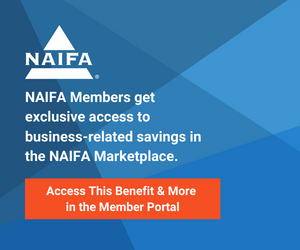Here are five steps you can take to effectively leverage the relationships you have with your strategic alliances.
1. Paint a picture of your ideal client to your referral partners. If you can’t clearly paint a picture of your ideal client, how can others know who to refer to you? If you are not clear about who your ideal client is, take time to determine who it is. If you are not sure who your ideal client is, begin by asking yourself these questions:
*Who are my favorite clients?
*What do they do for a living?
*What do they do in their free time?
*What do I enjoy about them?
*What civic, fraternal, or business organizations do they belong to?
*How did they become my clients?
*What is their favorite charity?
*Do they have a faith?
If you do not know the answers to these questions, begin by scheduling appointments with your ideal clients to find out the answers. This is one of the most critical steps to leveraging your strategic alliances and getting more referrals; so take the time it requires to complete it.
2. Set expectations. The biggest difference between advisors who effectively utilize strategic alliances and those who don’t is that those who don’t do not have clear expectations. Too often, advisors start giving referrals in hopes that they will get some in return. This method rarely produces the result they are looking for. A better option is to meet for coffee with partners in your potential alliance and discuss expectations.
For example, you can ask them: “We have numerous clients who need tax advice (or whatever is appropriate for the situation) and are looking for alliances who are interested in a reciprocal referral relationship. Are you interested in getting more ideal clients? Are you open to a reciprocal referral relationship in which both of us commit to referring prospects to each other?”
The key is to follow up each quarter and to review your referrals. This process is not a “tit-for-tat.” However, I like to provide two to four referrals and see if people in my strategic alliance reciprocate.
If they haven’t referred anyone to you, you can address this issue at your quarterly meeting. This is also a good time to discuss their plans for supporting your business in the future. Depending on the conversation, you may elect to continue referring or wait until they reciprocate.
Sometimes, other advisors can’t refer prospects to you because they are with other financial advisors. If this is the case, ask them to sponsor one of your client events or a feeder workshop.
3. Ask for introductions instead of referrals. Something psychological happens when you ask a strategic alliance partner for an introduction instead of a referral. This approach may be more effective because an introduction doesn’t carry the weight that a referral does. Try this method and see if it is easier to obtain introductions than to get referrals.
4. Schedule reviews with your referral partners. Just as you have reviews with your clients, so too should you have reviews with your referral partners. This is one of the most critical steps to improving results. Most advisors start referring and may or may not get a referral in return. Instead of doing something to change the situation, they become frustrated. By scheduling reviews, your referral partners can see the value of your relationship and it is more difficult for them to forget about you and your agreement.
During your quarterly meeting, review the referrals both of you have given and determine how you can support each other, moving forward. Your on-going meetings are more effective if you have agreed to the expectations up-front.
5. Add some non-traditional referral partners to the mix. Even if you have an alliance of reciprocal partners, one of the key factors for leveraging these alliances is to be open to the idea of adding more referral partners to your circle. The type of referral partner you add will depend on the services you provide. While traditional partners, such as CPAs and attorneys, can be a great way to grow our business and get more referrals, another option is teaming up with non-traditional strategic alliances, such as bankers, investment advisors, agents, brokers, and lenders.
If you do not have a list of non-traditional alliances, ask your ideal clients informational questions such as what they do for a living, and what vendors and service providers they use. You will soon know the best non-traditional alliances to cultivate.
---------
By Annette Bau, CFP
Annette Bau, CFP, is the founder of MillionaireSeries.com and AdvisorMarketingPractices.com. For more information, visit About Annette Bau. This site is not designed to provide you investment advice or financial planning advice. By visiting or access anything on this site or another site MillionaireSeries.com is linked to, you agree to consult with your own advisors and review your situation.






.png?width=300&height=300&name=CC%202025%20Ad%20(300%20x%20300%20px).png)
.png?width=300&height=600&name=Tax%20Talk%20Graphic%20-%20email%20tower%20(300%20x%20600%20px).png)



.png?width=300&name=NAIFA-FSP-LH%20with%20tagline%20-%20AT%20blog%20email%20ad%20(300%20x%20250%20px).png)
.png?width=728&height=89&name=2024%20Congressional%20Conference%20(728%20x%2089%20px).png)
